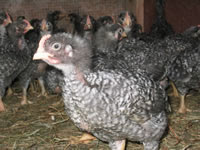This post is loaded with photos; while I try out my new phone/camera.
We all know how to do this one but here's mine anyway. This is a "what I actually did" post - with a few ruminations on what I should have done.
Weight analysis (I am, after all, sort of an engineer):
- Packages: gross (actual weight with packaging): 1020 grams (2 packages)
- As stated on labels: 991 g
- Net (actual weighed weight): 981 g (evidently they're cheating a little on the weights)
- Once trimmed (tips removed): 882 g (not bad, only 11% wastage)
Ingredients
- 900 grams chicken wings (in pieces) [2#]
- 4 T hoisin sauce
- 1 T oyster sauce
- 1 T Honey
- 1 T rice wine vinegar
- 1 T soy might be a good idea - but I didn't
- ½ t salt
- ½ t pepper
- ¼ onion (scallions or green onion would be best) (I used none, 'cause I was out of it)
- 1 t ginger powder (fresh would be better)
- 3 cloves garlic
- 3 T H2O (on looking at the results I'll leave this out next time)
- 1 red pepper
Procedure (with pictures)
Take some chicken. In this case, 2 packages

Which will look like this one unpacked

Chop off the pointy tip of the wings at the joint (save for making broth some day)

And you'll get this

Cut wings in two at the joint gets you two "wings" from each wing

Clean up any little pin feathers left over

Mix (stick mixer) the ingredients (except the chicken pieces) then
Marinate chicken 15 minutes or more (this is them marinating); stir around half way through

Oil a baking pan and bake wings for 30 minutes in a 190 C oven [395F]

Turn and baste halfway through (thanks Elizabeth for the silicon basting brush)

Broil for 5 minutes more to crisp them and you'll get this (before)

After

Procedure (in one block)
- Chop off the pointy tip of the wings at the joint (save for making broth some day)
- Cut wings in two at the joint
- Mix (stick mixer) the ingredients (except the chicken pieces)
- Marinate chicken 15 minutes
- Meanwhile: Preheat oven to 190C [375F]
- Wash the dishes you got dirty
- Empty the dishwasher
- Crack a beer
or even better
- Crack a beer
- Empty the dishwasher
- Wash the dishes you got dirty
- Oil a baking pan and bake chicken wings for 30 minutes
- Turn once and baste with the marinade
- Broil for 5 minutes more to crisp them up
Done
Notes
- Put them on a rack if you want to keep them out of their own fats
- Don't use the marinade as a dipping sauce. Make more if you want to but the mariande's been contaminated with chicken juice and you don't want to be eating that.
























